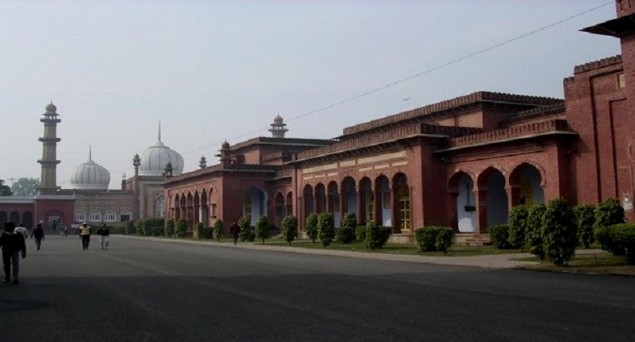India Tomorrow
New Delhi, Feb 14— In the history of around 150-year-old educational institution of Asia repute, its middle name and status have often been bone of contention for some people – particularly those on the side of the Hindu right. More than half a century after a five-judge bench of the Supreme Court denied the minority status of Aligarh Muslim University, a three-judge bench of the same court on Tuesday (Feb 12) referred a case related to the status to a seven-judge constitution bench.
The bench will look into the question whether Aligarh Muslim University or AMU was a minority institution as it was set up by an Act of Parliament. The larger bench would decide on the parameters for granting the minority status to an educational institution, what a minority institution is, how it is established and how it would run. It will also decide whether a university, distinct from a college, can be treated as a minority institution. The Constitution bench will also discuss the TMA Pai judgement on a minority institution.
AMU, set up as the Mohammedan Anglo-Oriental College in 1877 by Sir Syed Ahmad Khan and expanded over next few decades, officially became University through an Act of the Parliament in 1920, known as the Aligarh Muslim University Act. However, its status as a minority institution was challenged decades later.
Chronology of Event Regarding Minority Status of AMU:
1967: A five-judge bench of Supreme Court, while dealing with Azeez Basha case, had held that AMU was a central university and it was not a minority institution as it was set up by an Act of Parliament.
1981: In 1981 the question of minority institution was referred to a seven-judge bench, which in turn referred it to an 11-judge bench but the question remained unresolved.
1981: The Parliament amended the Aligarh Muslim University Act to check the impact of the 1967 order of the Supreme Court.
2006: The Allahabad High Court quashed the Aligarh Muslim University Amendment Act 1981 and held that AMU was not a minority institution and, therefore, the notification issued by the central HRD Ministry permitting the university to reserve seats for Muslims in post-graduate medical courses was illegal.
2006: AMU as well as the then Congress-led UPA government of Prime Minister Manmohan Singh separately challenged the Allahabad High Court verdict in the Supreme Court.
2016: The BJP-led NDA government of Prime Minister Narendra Modi filed an affidavit in the Supreme Court seeking withdrawal of the pro-AMU affidavit filed by the Congress-led UPA government. The new government supported the Allahabad High Court verdict that AMU is not a minority institution.
2019: The Supreme Court referred the minority status case to seven-judge bench. Appearing for AMU, senior counsel Rajeev Dhavan told the court that the judgement in the Azeez Basha case 1967 was bad in law and needed a relook. He also said that central legislation making AMU a university in 1920 was just a technicality and this could not denude the AMU of its minority character. On the other hand, in January this year, the apex court dismissed a petition that sought to change the name of Aligarh Muslim University.
We Are Open to All Irrespective of Caste, Creed, Religion or Gender: AMU
In a brief about AMU on its official website, it is written that the university is open to all.
“Spread over 467.6 hectares in the city of Aligarh, Uttar Pradesh, Aligarh Muslim University offers more than 300 courses in the traditional and modern branches of education. It draws students from all states in India and from different countries, especially Africa, West Asia and Southeast Asia. In some courses, seats are reserved for students from SAARC and Commonwealth Countries. The university is open to all irrespective of caste, creed, religion or gender. It ranks 8th among the top 20 research universities in India,” reads the website.
— With Inputs From IANS





